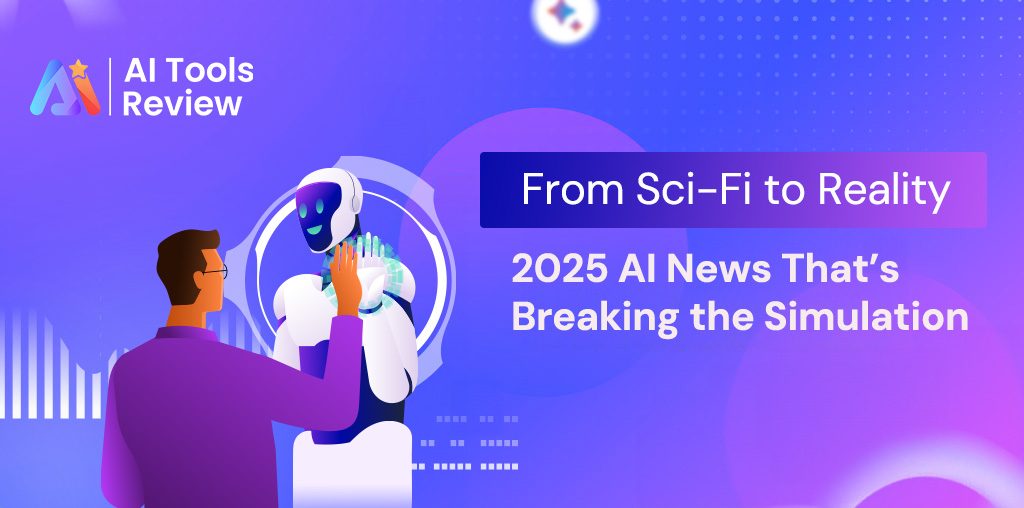Remember when we watched sci-fi movies and thought, “That’s cool, but it’ll never happen in my lifetime”? Well, 2025 is here to prove us wrong. The line between science fiction and reality is blurring faster than ever, with artificial intelligence developments that would make even the most imaginative sci-fi writers do a double-take. As advanced AI systems continue to transform our world, the once fantastical has become surprisingly ordinary.
Neural Interfaces: Thought Control No Longer Science Fiction
In early 2025, NeuraSync unveiled its consumer-grade neural interface that allows users to control smart home devices with thought patterns alone. While not the full brain-computer interface that sci-fi promised, these non-invasive headbands can distinguish between 15 different thought patterns with 92% accuracy. Early adopters are already turning on lights, adjusting thermostats, and sending pre-written text messages without lifting a finger.
“The first time I changed TV channels by just thinking about it, I felt like I was living in the future,” says tech reviewer Maya Rodriguez. “It takes about two weeks of training for the system to recognise your unique thought signatures, but once calibrated, it’s surprisingly reliable.”
AI Companions Getting Uncomfortably Real
The latest generation of AI companions has crossed into what many are calling the “uncanny valley of personality.” Companies like Emotionai have developed models with consistent personality traits, preferences, and even simulated emotional growth over time.
“What makes these different from earlier chatbots is the coherence and consistency,” explains Dr. Harrison Lee, AI ethicist at MIT. “These systems maintain complex relationship dynamics over months of interaction, remember shared experiences, and develop what appears to be genuine attachment patterns.”
This development has sparked heated debate about the ethics of emotional attachment to non-sentient systems, with some psychologists warning about potential dependency issues while others point to benefits for isolated individuals.
Medical Diagnostics: The AI Doctor Will See You Now
Healthcare has seen perhaps the most impactful AI integration of 2025. MediScan’s diagnostic AI system made headlines by outperforming human radiologists in detecting 18 different conditions, from lung cancer to early-stage heart disease. The system is now deployed in over 200 hospitals worldwide.
More controversially, home diagnostic systems have hit the market, allowing consumers to perform basic health assessments using smartphone cameras and microphones. These systems analyse everything from skin anomalies to subtle voice changes that might indicate neurological issues.
Dr. Sofia Chen of Stanford Medical Centre notes, “These tools are revolutionising preventative care, but they’re not replacing doctors. They’re helping identify potential issues earlier and directing patients to appropriate care faster.”
Synthetic Media: Can You Trust What You See?
Perhaps most concerning is the advancement in synthetic media generation. AI can now create video and audio that is virtually indistinguishable from reality, even to trained experts. The technology has legitimate applications in film production and content creation, but has raised serious concerns about misinformation.
In response, a digital watermarking standard called AuthentiMark has been developed and adopted by major tech companies. This embedded signature identifies AI-generated content, though critics note that malicious actors could simply strip the watermarks.
“We’re entering an era where seeing is no longer believing,” warns digital rights advocate Jordan Williams. “The technology is advancing faster than our systems for managing it.”
Environmental AI: Digital Minds Solving Physical Problems
On a more positive note, environmental applications of AI are showing remarkable promise. Climate modelling AIs from GreenMind Tech are now capable of predicting localised climate impacts with unprecedented accuracy, helping communities prepare for specific effects of climate change.
Additionally, autonomous drone systems are being deployed to restore damaged ecosystems. In the Amazon, seed-planting drones guided by AI are reforesting areas at 17 times the rate of traditional methods, identifying optimal planting locations based on soil composition, light levels, and biodiversity factors.
What’s Next?
As 2025 unfolds, artificial intelligence continues to reshape our reality in ways previously relegated to science fiction. The ethical, social, and philosophical questions raised by these technologies demand thoughtful consideration from all of us.
Are we prepared for a world where thought-controlled interfaces become commonplace? What happens when emotional attachment to AI becomes normalised? How do we maintain truth in a world of perfect simulations?
One thing is certain: the pace of artificial intelligence development shows no signs of slowing. The challenge for society is ensuring that our ethical frameworks, regulatory systems, and personal adaptability keep pace with technologies that were, until very recently, confined to the realm of imagination.
The simulation isn’t just breaking—it’s being rewritten in real-time by artificial intelligence that grows more powerful each day.


